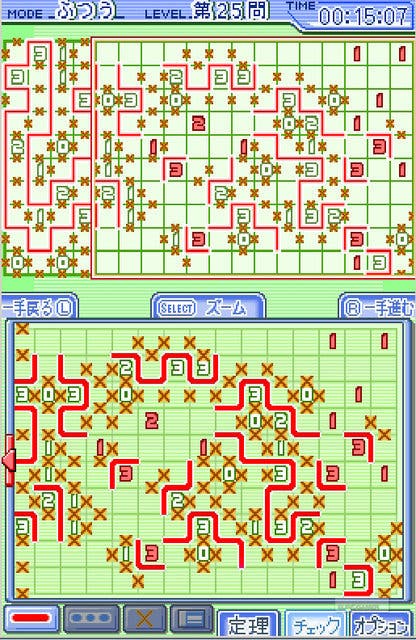Retrospective: Listen, We Have to Talk
John reassesses his relationship with the DS.
Blowing into the mic was one of the strangest things about the early DS. Presumably intended as an audio input, it was adopted by developers purely as something to blow on.
At first this was cute. It's no longer cute. In fact, there cannot be many left who hadn't discovered that tapping on the mic with a finger has much the same effect as blowing, making train journeys less awkward, but removing the romance of a lot of moments.
Blowing out the candles, watching them flicker, then extinguish, the thin wisp of smoke rising from the wick as if a ghost of the flame that was.
The DS had us enraptured. It had developers enraptured. They had been given a collection of tools so strange they were forced to reinvent. Two screens, an inch apart, and above one another. Then one of them is a touch-screen that responds to both a stylus or a finger. There's a microphone, there's an array of buttons scattered all over. And it folds closed.
It was so startlingly different, so silly, and it engendered an enthusiasm amongst the inventive to let this inspire them. And so it was that games like Rub Rabbits appeared. Games like Pac-Pix, where your drawings on the screen would come to life, move around. It was magical. It was like casting spells, the stylus your wand.
As time went on our love matured. We were more calm, but no less close. If anything we spent even more time together. Hours and hours in each other's company, no need for constant thrills, but instead embracing the comfort of our companionship.
We still had adventures. We still had our times. Exciting nights, days spent exploring, but always waiting for us the security of home. It was enough for it to be us.

2006 to 2008 saw the DS reach a more mainstream audience. Games like Brain Training had identified a role for the machine outside of the hardcore gamer, and indeed outside of the children's market that had dominated the GameBoy.
Families, mothers, daughters. Of course Brain Training was as delightfully mad as so many of the early releases, combining educational challenges (maths, language and so on) with a lunatic professor and a daft sense of humour.
It was a game that would chastise you for staying up too late, or for slacking on your practice. Of course it brought forward a million copycats of varying success or failure, but it also reminded us that the DS could be a platform for puzzle games.
Hudson Soft released 13 games from March 2006 to March 2007 in its Puzzle Series. Only officially released in Japan, these were mostly popular Japanese puzzle games converted to the touch-screen with a rare gift for economic use of the DS's features.
Beginning gently with a jigsaw puzzle simulator, a crossword collection (one of the few impenetrable to a non-Japanese speaking audience), and of course the all-conquering sudoku, they established they knew how to use both screens without gimmicks, and the touch-screen without frustration.
August saw the splendid Kakuro, before the series' apogee in November. Alongside a second crossword cart, and indeed the absolutely stunning picross game, Illust Logic (infinitely better than Nintendo's own Picross DS, and only beaten by Mario Picross on the GameBoy), was Slitherlink.
I lost count of the hours. Just you and me, tangled limbs. No beginning. No end.








